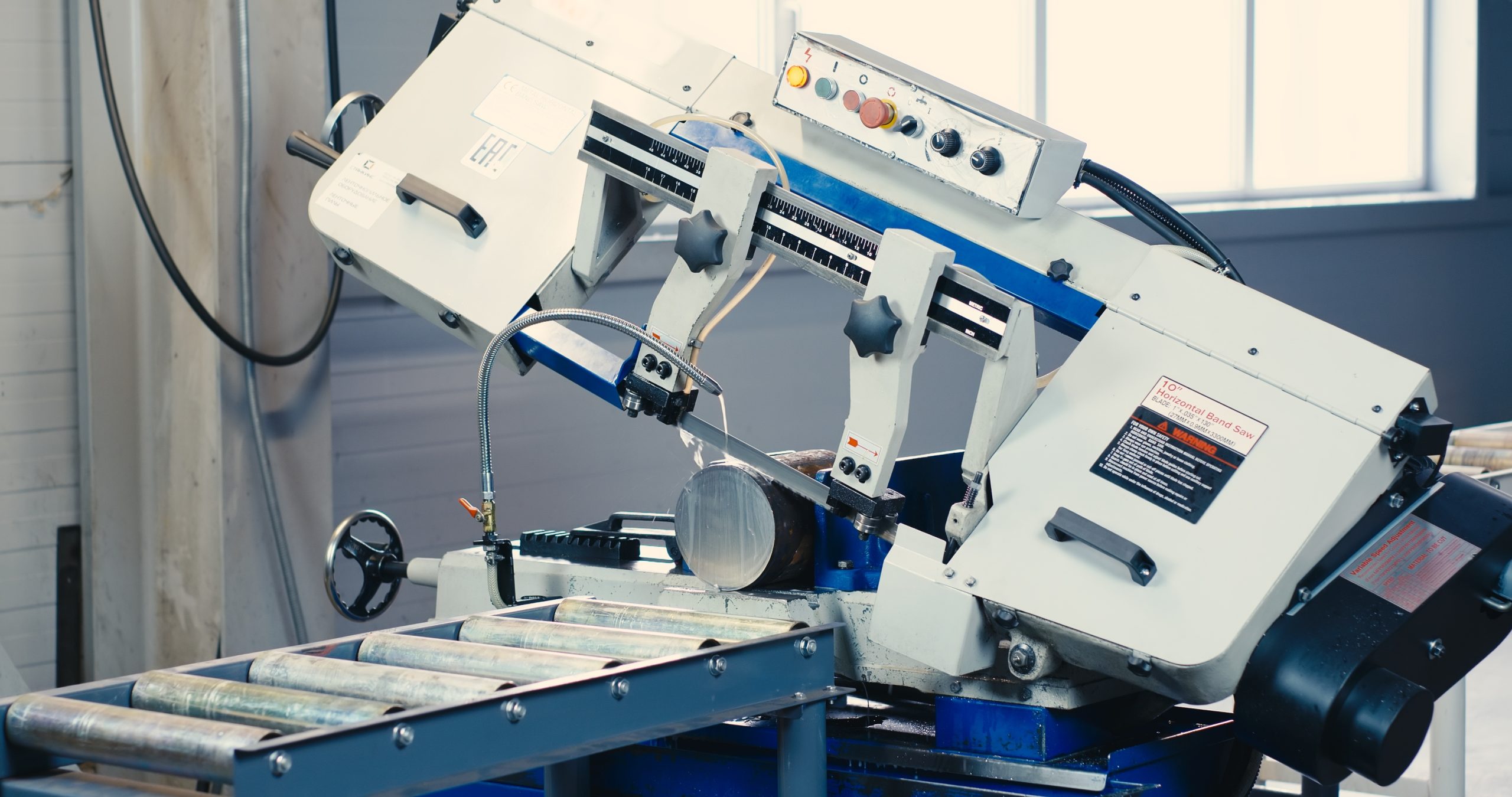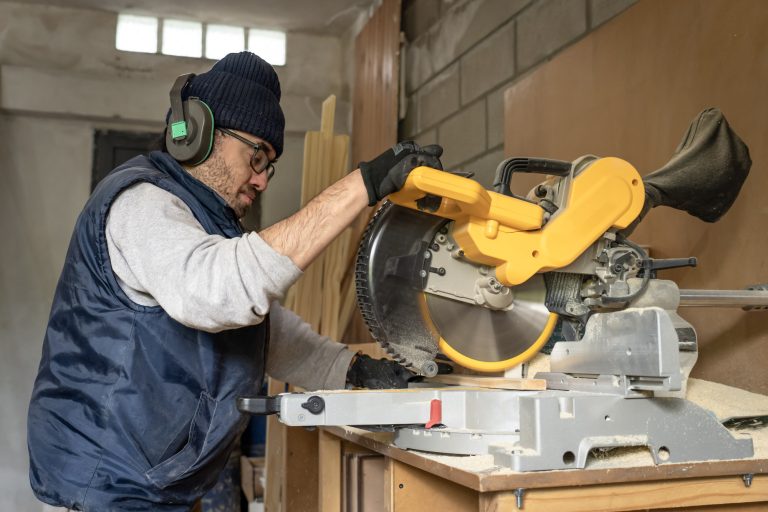Custom saw manufacturing is a specialized field that requires knowledge and experience. Generally, the primary goal is to meet customer specifications regarding size, shape, and other features. Hence, you should understand the necessary materials and tools before production to ensure success.
Therefore, this article will provide an overview of the process, including what it entails, how to design custom saws, and critical considerations for successful outcomes.
Overview Of Custom Saw Manufacturing
Custom saw manufacturing is the process of producing blades suitable for cutting various materials. It involves creating a blade with desired specifications, such as size, shape, and number of teeth. The process requires understanding metallurgy, mathematics, and design principles to produce durable saws that withstand wear over time.
Types Of Custom Saws
Custom saw manufacturing is a broad subject that includes various types of saws. The range of custom saws available can be tailored to each customer’s needs and requirements to fit your project perfectly. Here are the different options:

Deck Saw
A deck saw is a custom saw used for making cuts on sheet materials or other large, flat surfaces. It consists of a base with an adjustable fence and rail system that travels along the length of the material to make accurate straight cuts. You can adjust depending on the thickness and width of the cut material. Typically, woodworkers use deck saws, such as Pacific Trail Deck Saw or similar kinds, when building furniture, decks, and other projects requiring precise cutting operations.
In addition, deck saw blades come in various sizes designed to accommodate different materials such as particle board, plywood, medium-density fiberboard (MDF), hardwoods, softwoods, and laminate flooring. You can also purchase specialty blades with metal, plastics, and laminates.
Circular Saws
Circular saws are among the most common types of saws used in woodworking. These manually operated saws have a sharp, toothed circular blade that rotates around an arbor and is used for cutting wood and other materials. They can be powered by gasoline engines or electric motors, with different models for home workshops and industrial settings.
The power level depends on the material being cut and its thickness; thicker woods require more powerful saws than thinner ones. Here are four key benefits of using these versatile tools:
- Sawdust Collection: Many modern circular saws have dust collection systems that help keep work areas clean and safe from airborne particles.
- Portability: Portable circular saws allow users to take them wherever they need to go without worrying about setting up shop every time they use one.
- Safety Features: Some circular saw models offer safety features such as adjustable depth stops, anti-kickback pawls, and guards that reduce the risk of injury while using them.
- Precision: When properly adjusted, some circular saw blades provide precise cuts; this allows for better accuracy when working on complex projects such as furniture making or cabinetry construction.
In addition to these advantages, many manufacturers now offer additional accessories to make them even more convenient and efficient for various tasks.
Crosscut Unit Saw
The crosscut unit saw offers similar benefits to circular saws but with the added advantage of making multiple cuts at once. It is ideal for large-scale woodworking projects or industrial operations with limited time.
Notably, crosscut unit saws differ from circular saws because they have two blades instead of one. These blades rotate around each other in opposite directions, so the teeth interlock when the material passes, producing an exact cut. Unlike a circular saw blade which requires manual adjustment depending on the desired angle, a crosscut unit saw has preset angles designed for specific cutting tasks.
Jigsaws
These are essential tools for custom saw manufacturing. They typically feature a reciprocating blade that can make curved and angular cuts in wood, metal, or plastic. They are often used for cutting irregular shapes and patterns into material. The components of jig saws include:
- A motor to power the circular blades
- An adjustable base plate that holds the material being cut
- Variable speed control so you can accurately cut different thicknesses of materials
- A guard to protect the user from accidental injuries caused by contact with the blade
Jigsaws offer many advantages over other types of saws; they require less effort when cutting curves due to their lighter weight, they produce smoother edges on most materials due to their oscillating motion, and they allow more precise cutting than some other tools because it is easy to adjust the depth of the blade.
Materials Used In Custom Saw Manufacturing
The material selection is determined by the intended function and use of the saw and other factors such as cost. Below are some materials to choose from:
High-Speed Steel (HSS)
HSS is essential for producing custom saw blades. It allows manufacturers to create durable tools capable of withstanding extreme temperatures without losing their cutting edge. It provides a range of advantages that make it popular among custom saw makers:
- High strength, wear resistance, and durability in high-temperature environments.
- Superior hardness compared to other materials such as carbon or alloy steels.
- Ability to withstand repeated sharpening cycles without significant loss of function.
- Good corrosion resistance when exposed to acids and alkalis.
- Low-cost relative to other materials used in tool manufacturing.
HSS can be beneficial in applications where superior cutting performance is required. Its toughness, flexibility, and heat treatment allow for excellent results even under demanding conditions.
Carbide-Tipped Saw Blades
The grinding of carbide-tipped blades emits a distinct metallic smell you can identify from miles away. As the process begins, tungsten carbide is fused with cobalt and applied to saw blade bodies. The result is an exceptionally resilient cutting edge that requires minimal sharpening and replacement throughout its lifespan.
These blades offer superior longevity and durability compared to their counterparts made from steel or other metals, making them ideal for industrial manufacturing applications where long-term performance is crucial.
Diamond-Tipped Saw Blades
Diamond-tipped saw blades are a popular choice among custom saw manufacturers. The metal cutting tool is made of an alloy steel body featuring small diamonds embedded in its surface. These diamonds increase the blade’s hardness and wear resistance, improving performance when cutting through hard materials such as concrete or stone.
Additionally, diamond-tipped blades have a long service life due to their increased durability, providing cost savings over time. However, it’s important to note that these tools require special care during operation; you should only use them on softer material, and must be at the maximum rotational speed specified by the manufacturer. It will help ensure optimal performance and extended lifespan of the blade.
Bi-Metal Saw Blades
Bi-metal saw blades offer an alternative option when cutting complex materials. These blades contain two layers of metal bonded together with a special alloy. This combination allows them to remain sharper longer than single-layer blades while providing better heat resistance.
They also require less force to cut, reducing strain on the saw blade’s motor. Bi-metal saw blades are cheaper and easier to sharpen than diamond-tipped ones, making them more economical.
Custom Saw Manufacturing Process
The process of custom saw manufacturing is complex and requires skill and precision. Below are the steps you should follow for the best outcome:
-
Design And Engineering
You must undertake comprehensive design to ensure you meet the desired objectives of a customer’s request and any additional requirements arising from use cases. It may require a detailed analysis of material properties such as thickness, hardness, and wear resistance.
Additionally, engineers should consider safety factors when designing a custom saw blade, particularly for those with high-speed or extensive cutting power capabilities. The engineer must also consider other system parts, including drive components, machine guidance systems, and support structures, which must incorporate adequate protection features to comply with applicable industry standards.
-
Material Selection
Materials used in custom saw manufacturing need to meet stringent criteria such as durability, strength, cost-effectiveness, and environmental compatibility. Each type has unique properties you should examine before deciding which will best suit the desired outcome.
When selecting materials for components exposed to extreme temperatures or corrosive environments, it’s essential to give special consideration and potentially implement additional protective measures. Choosing suitable materials for the task is crucial, considering any relevant safety regulations in the industry.
-
Saw Blade Creation
Saw blades are the core component of any saw, playing an integral role in how well it cuts. Their construction is a complex process that requires precision and expertise to ensure they function correctly. The chosen material must be cut into shapes based on the specific design needed for the job, ensuring all measurements are accurate and conform to industry standards.
This step can involve laser cutting or computerized numerical control (CNC) machining methods, which give a precise result. Once cut, heat treatment processes such as tempering or hardening may need to be done before sharpening and finishing touches can be carried out.
-
Heat Treatment
Heat treatment is a process used to alter the physical properties of metal without changing its shape. It involves heating and cooling metals in a predetermined sequence at specific temperatures for an allocated period. Moreover, it can improve a metal component’s strength, hardness, flexibility, toughness, corrosion resistance, and other characteristics.
The heat-treated components are then cooled quickly with air or water quenching to solidify rapidly into a rigid state. Tempering may be incorporated as part of the heat treatment process to achieve uniformity throughout the material during this phase.
-
Grinding
Grinding is a crucial step in a custom saw manufacturing. It involves smoothing the cutting edges of the blade by wearing down any irregularities, such as burrs or chips left over from earlier steps in the production process. It helps ensure the saw can cut effectively and efficiently without producing excess strain on its blade or motor.
Usually, grinding requires specialized equipment and techniques, including diamond abrasives and honing stones. Coolants are often employed to help reduce heat build-up during grinding operations. Thus, experienced operators must use precise control to achieve optimal results when handling this part of the fabrication process.
-
Finishing
After grinding, the next step in the custom saw manufacturing process is finishing. It involves several activities, such as:
- Sanding and buffing of surfaces to smooth out any imperfections left from the grinding stage
- Applying a coating or sealer that will protect the saw from corrosion, wear and tear, and other environmental factors
- Sharpening of teeth for cutting accuracy
- Testing to ensure proper function before packaging for delivery
You must complete these steps carefully since improper finishing can lead to premature failure due to rust, dull blades, or compromised structural integrity.
Conclusion
The custom saw manufacturing process is intricate and requires great precision and care. It involves the creation of specialized saws, such as the deck, circular, and crosscut units. You must then create the blades with heat treatment, grinding, and finishing to meet the specific requirements for each type of custom saw.
By following these steps closely and considering the purpose for which each type of custom saw is used, manufacturers can create products up to the task when cutting any material. Through this guide, you’ve seen how complex the process of creating custom saws can be. But with careful attention to detail and an understanding of the materials you are working with, you can succeed in producing high-quality customized saws.

